Marke
- Häufigste Marken:
- Generisch (95.288)
- Generic (27.118)
- Prophila Collection (11.408)
- Topolino (10.883)
- ibasenice (10.193)
- TOYANDONA (9.429)
- Abaodam (8.913)
- Karneval Universe (8.565)
- BESPORTBLE (8.020)
- Toyvian (7.252)
- » Alle Marken anzeigen
AA-Model (392)Aakdgd (673)Abacusspiele (277)Abaodam (8.913)Aber (1.586)ABOOFAN (487)Academy (341)Academy Plastic Model (324)Acrylicos Vallejo (1.590)Acunny (557)ADOCARN (634)Adrosstoller (332)aerobonus (411)AFCAHEH (1.459)AFV-Club (404)AGSDGAWD (399)Agwuoetr (410)Aires (533)Aires Hobby Models (720)Airfix (981)AKDODK (274)AK Interactive (2.382)Alasum (1.546)Alipis (1.441)alles-meine.de GmbH (3.636)Alomejor (724)Alvi (1.582)Amagogo (2.618)Amakando (524)Ambiance Sticker (433)Amewi (593)AMIGO (465)AMMO by Mig Jimenez (1.541)Amosfun (1.054)Amscan (2.213)AMSCAN EUROPE GMBH (458)amscan® (568)AMT (329)AMT/MPC (355)Angoily (516)Anlgdi (953)AOFCESQY (1.895)APLVFFZH (260)Arena (919)ARHEORMUH (695)Arnold (329)Arrma (1.667)Ars Edition (588)artgeist (279)Asmodee (476)ASSORT (495)Asuinxurr (345)Asyduey (620)Atomic Mass Games (542)ATOSA (686)ATTBBH (512)Auforua (254)Auhagen (1.724)awhao (2.440)Axial (983)AXspeed (279)Ayztantine (456)AZMINI (478)Azxcvbnm (357)BBalsløw (1.217)Bamberg (325)Bandai (963)BANDAI SPIRITS (1.252)Banpresto (1.329)Baoblaze (701)BaronHong (449)BATIVFLUG (587)BBEXJIGY (725)bb Klostermann (312)Bburago (1.158)BC Garn (352)BCOATH (405)BESPORTBLE (8.020)BESTONZON (6.001)Best Price Square (266)Bestway (326)BESTYASH (494)Bexdug (331)BINGGA (398)Bizak (343)BKDODKS (1.515)Bkdogkt (2.967)Blade (842)BlueBrixx (332)Blumomon (354)BMAONZ (2.980)Boland (2.062)BOLAND BV (905)Booso (332)Brawa (2.567)BREAUX (2.570)BREKINA (1.925)BRENGUN (905)BRIGHTFUFU (1.007)BRIO (723)Bristol Novelty (639)BROLEO (1.032)BRONCO Models (275)brooksnaji (295)Bruder (468)BRUDER DIE PROFI SERIE (272)Brunnen (3.402)Bsbkoj (535)BTYQKZVPM (298)BULLYLAND® (299)Busch (5.195)CC.Kreul (471)Cabilock (2.370)Calvendo Puzzle (1.178)CAMUO (1.389)cardyven (302)Carlsen (650)carotoe (748)Carpeta (550)CARRERA (2.705)Carson (1.737)CAXUSD (464)CC0 (305)ccuzs (439)Ceprznvey (456)Changzhong (564)CHICAMPERA (505)Chicco (690)CHILDWEET (978)CHIZISX (371)Ciieeo (757)CIMAXIC (537)CIYODO (1.612)CKGODGF (267)Clementoni (1.364)Clispeed (784)Clover (257)Cmagnifico (563)CMC imports (645)CMK (1.430)CMON (398)Cnrose (466)Cobi (1.005)Colcolo (2.605)COLLBATH (764)CollectA (1.038)COMNESTBI (359)Conruich (446)Coocazoo (461)Coppenrath (1.082)Corgi (294)CORHAD (375)Cornerstone (416)CORVUS (413)COSMEVIVI (671)CPAOWEHF (341)Cpolebev (641)Creativ Discount (624)crocs (303)Csafyrt (359)Csnbfiop (281)Culnflun (1.034)CUTSUGOK (320)CYHTYM (846)CYQOCD (2.704)CYRMPQ (403)Dd2d-needs (262)DazzJoy (661)DEARMAMY (1.464)DECHOUS (1.950)Deiters (280)DekoHaus (324)Dekora (373)Depesche (808)Depesche TOPModel (443)DEWADE (772)Dickie Toys (520)Dickly (2.393)Die Spiegelburg (1.483)DIGNIFE (322)Diheohg (655)DIKACA (2.977)Dilwe (969)Diogeynu (781)Disney (696)DIVERSE (2.246)divuukyi (1.062)DIWULI (762)DIY - Malen nach Zahlen (1.998)DIYEAH (708)Djeco (484)dkkuvt (4.024)DMC (284)DMLENGOIN (2.846)Docsmagic.de (254)DOITOOL (481)Done by Deer (320)Dorling Kindersley (350)DPLBAZHC (5.342)Dragon (254)DRESSOOS (1.721)Drfeify (303)Drops - Garnstudio (2.166)Dtaigou (366)DTREEL (379)DUEVEL (3.700)Duroecsain (262)DzirePada (313)EE-Flite (1.857)Easy Model (306)Ecco (523)Eduard (6.953)Eduplay (356)EdWal (827)eejinwen (594)EEQANAO (333)Eeuye (437)efaso (435)Egmont Toys (278)EHJRE (1.889)EHxCUF (5.709)Eichhorn (465)ElRozo (268)emma&noah (421)equlup (637)Ergobag (665)ERINGOGO (5.291)ERTTNT (2.163)Erzi (281)ESPA (404)ESTCNK (334)ESU (263)ETAWDE (306)EtriiQURV (255)Etsy - VintagePerfumeShop (350)Etsy - VintageRetroEu (260)Etsy - Xoxiane (359)Eulenspiegel (318)eumenghe (491)Eurolite (295)Evans (343)Evemodel (336)Evergreen (1.166)EVTSCAN (3.912)Exceart (262)EXYFRUX (560)FFansu (334)Fantasy Flight Games (777)Fcnjsao (532)Feeuid (301)Fegtrtyoa (379)Feldherr (1.192)FELTECHELECTR (864)Fender (250)Fenteer (2.384)F FITYLE (4.035)Fhkpsqkcn (609)Fiestas Guirca (767)Fiestas Guirca, S.L. (352)Fillikid (256)Fisher-Price (445)Fivetwofive (492)Fjnbbiot (655)Fleischmann (1.317)FloZ (521)Folat (2.227)Folia (330)Folpus (2.134)FOMIYES (267)FOYTOKI (292)Fozriybefy (306)Franckh-Kosmos (320)Frcolor (474)Frechverlag (405)Fremego (312)Fries (353)Fruusv (410)Fuhjythy (324)FunKo (730)FUNNETOYU (633)FUNXGO (493)FUXIU (729)GGADAW (325)Gadpiparty (252)GALPADA (960)Gamegenic (743)GAMERSHEAVEN (1.109)Games Workshop (1.594)Garneck (1.970)GAROZATION (384)GARVALON (562)Gatuida (2.268)GaxfjRu (3.224)Gbloodst (351)geburtstagsfee (5.002)Gefomuofe (387)Generic (27.118)Generisch (95.288)Genérico (1.077)GETAJGHSD (640)Geuther (553)Ghjkldha (493)Gina (2.373)Gina Benotti (4.807)Ginger Ray (284)Giochi Preziosi (289)Gitekain (272)GIWFBQTR (556)Giwnhvx (529)GLEAVI (459)GLSTOY (567)Glugahrif (443)GMBYLBY (337)Gogogmee (321)Goki (1.737)Gollnest & Kiesel KG (256)Good Smile Company (455)Goufride (436)GPM (902)GPM Racing (634)Grafika Kids (375)Graupner (441)Greenlight (292)GREOHNMPAW (770)GTFRUQAS (2.517)GTVNPOA (3.394)Guirca (267)Gungtj (253)Gutermann (547)Gvblkq (386)Gyufise (432)GZHYHAKAN (371)GZSRTT (2.298)Générique (4.800)HHaba (2.138)Haiki (291)HANABASS (588)Hangar 9 (337)Haosell (264)Hape (810)Happygoods GmbH (565)Happy People (734)Happyyami (256)harayaa (2.271)Harilla (2.870)Hasbro (1.220)Hasegawa (2.298)HaT Industrie (291)Hattba (447)HAWILLOSCH (556)HCVXBSA (1.795)HDIJDY (299)HEALSOPTHY (732)Heki (932)Heller (1.046)Hemobllo (411)Hemoton (2.993)Hermosiey (500)Herpa (5.122)Heunec (865)HFVUYAR (379)HGtAeW (286)Hgvcse (605)HINAYOSAN (890)HIOPOIUYT (870)HiPlay (1.107)Hjertegarn (1.004)HJLUUFT (3.280)HNsdsvcd (1.330)Hobby Boss (1.224)Hobbyboss (896)HOBBY FAN (262)Hogvinnatil (529)Hohopeti (406)Holibanna (995)HOLIDYOYO (506)Holztiger (334)HOMOBABE (335)Homoyoyo (1.316)HOMSFOU (295)Hongyantech (363)HONITANO (659)HONMEET (411)HOOTNEE (524)Hornby (677)Horror-Shop (731)Hot Wheels (2.432)Housoutil (251)HOUXINQWWP (604)Hrtyvhin (823)HSHSWA (534)HSYH (365)HTTUP (2.708)HUANTY (314)Huch! (258)Huhpa (1.749)Humbrol (724)Hummel (290)Huudngeje (425)HUURAA (1.088)Huvqianu (310)Hxhsgmeh (413)Iibasenice (10.193)Icegrey (798)ICM (1.249)Idena (505)ifundom (5.849)IJOSADON (2.522)I LOVE FANCY DRESS (363)IMIKEYA (3.808)Infinity Hearts (1.605)INJORA (992)INOOMP (372)Integy (309)Iouyjiu (546)Ipetboom (645)iplusmile (1.123)ISKDJBJG (411)Italeri (2.093)Ixo (718)JJada Toys (999)Jamara (2.294)Janod (477)JBYJBX (1.994)JCWGLY (599)JECOMPRIS (339)Jeenuuder (303)JeVenis (455)JGHFReW (308)jiingekk (620)JIPOFD (954)JISADER (2.226)JIUTY (787)JJPUNGK (471)JOINPAYA (6.899)jojofuny (284)Jollein (306)Jolsaawie (276)Joswood (256)JOYSOG (324)JoyToy (762)JSGHGDF (710)Julius Zöllner (953)JUMPLAWN (914)JuNa-Experten (374)Junapack (826)Juqoyue (377)JUSONGKWCP (298)Jxuzh (370)JYYTERD (3.703)Järbo (695)KK&M (367)KAHDGSS (1.526)KARNEVAL-MEGASTORE (1.287)KarnevalsTeufel.de (538)Karneval Universe (8.565)KASFDBMO (321)Kato (265)KAVAT (325)Kaweco (272)Kayfg (353)KDSEFHHCB (286)Keenso (370)Kibri (1.418)KICHOUSE (1.867)KIDSZJA (363)Kioball (258)Kisangel (3.211)Kissmii (345)KJYMNC (378)KLAPR (446)KnitPro (1.224)Koboko (329)KoloQren (476)KOMBIUDA (4.472)KONTONTY (2.841)Kopper-24 (460)Kosmos (1.764)kowaku (1.374)KPHYMOD (2.299)Kremke Soul Wool (319)KRLZKID (305)Ksikdeg (473)KUAIYIJU (299)KUENCE (1.872)Kustimantu (416)Kyosho (306)LLeg Avenue (493)Lego (755)LEIDJGUN (1.387)Lenz (283)Lerpwige (1.559)Leuchtturm (645)Leuchtturm1917 (495)Lexibook (776)LfrXtra (1.011)LFWDOCN (533)LGB (487)LGHLZGVF (492)Libetui (419)LIbgiubhy (1.549)Liewood (409)LifeColor (832)LIFKOME (657)Liliput (343)LimPac (813)Limtula (1.848)Lindner (336)LINDNER Das Original (845)Lioggyet (403)Liqzirtu (356)LISCIANIGIOCHI (307)Little Dutch (461)LLTCMYGS (402)LNNIUK (2.704)Loewe (737)LOLPALONE (656)Loppott (1.110)Losi (1.348)Losueeun (322)LOVIVER (547)LRXIYODE (559)LSZBYHOK (283)Luckily&Day (3.925)Lurrose (418)Lutz Mauder (283)Luwecf (1.780)lvifloae (316)LÜK (330)Lässig (466)MMaclunar (376)MAGICLULU (1.925)Magic the Gathering (635)MagiDeal (2.286)Maisto (510)Majorette (386)Malloy (397)Marabu (412)Marvel (1.044)Master Box Plastic Kits (272)Masters of the Universe (337)Matchbox (578)Mattel (2.063)Mayflower (679)McFarlane (794)MDATT (1.550)Mega Brands (353)MEIBAOGE (372)Meiliyizu (273)Meinl (1.493)Melissa & Doug (394)Meng (363)MENG MODELS (376)Meyco (449)MGHGFYTAS (891)milageto (1.279)Milisten (4.398)Mimoqk (431)MiniArt (1.123)Mini Art (557)Minichamps (2.157)Minkissy (425)Mirage Hobby (354)Mirweon (830)MisterCraft (371)mivceklw (602)ML-Train (281)MLWSKERTY (1.922)MNSWR (5.647)Mobestech (693)Modellbahnshop Korn (991)Modellbau-Werkstatt (280)MOLKASIA (287)MOLUCKFU (1.216)Monster Jam (265)Monsterzeug (1.447)Montblanc (638)Moses (1.792)Motormax (540)Mould King (669)MQGMZ (768)MQODLFP (564)MUCKLILY (428)Mumuve (332)munabo (298)MUSISALY (395)my-booster (400)My Home (709)MYSXSWHL (419)Märklin (3.112)NNAMOARLY (1.963)nanger (455)Neca (400)Nettoppo (700)NET TOYS (770)NexaPart (540)Nici (1.155)NJTHNTJR (292)NNSOOD (974)Noch (4.279)Nordbjørn (942)Norev (1.351)NPXUAMTJ (1.204)Nsssunnre (474)NUOBESTY (625)Nuyhgtr (332)Nyutcwe (289)OOAJABBGE (1.167)OATIPHO (594)Oblique Unique (880)Odenwälder (279)OFFIGAM (657)Ohaoduo (265)Ohewiiuk (260)ohodhmnu (309)Ohulelks (629)Okeeyseda (934)OKFSTY (607)Operitacx (317)OPO 10 (1.338)Opvonxeh (352)ORFOFE (272)Orolotay (605)Ortega (318)OSALADI (264)Oseczmut (343)oshhni (2.359)Ostheimer (815)Oumezon (292)OUNONA (744)outland models (288)PPAGJHRFJG (944)PAIDI (294)PANHDK (294)Papo (1.362)Papstar (357)Partydeco (824)Party Discount (774)Partyhausy (650)PartyKindom (931)Paw Patrol (444)PBDEIOEOE (591)PCX87 (385)Pegasus Spiele (727)Pelikan (519)Perfeclan (2.710)perfk (378)Permin (374)PERSELOSO (473)Pesderty (251)Peter Bausch GmbH & Co. KG (381)PHENOFICE (657)Philos (280)Piatnik (607)Piko (3.471)Pilipane (276)PIPJLCGE (688)Pitadue (456)Pjeghbvop (842)Planet Models (256)PLCPDM (1.440)PLOQAZEH (4.229)plplaaoo (580)Plus-Plus (332)Plusmodel (985)Pocoiau (1.375)Pokémon (1.557)Ponmoo (371)POPETPOP (557)POPOYU (395)POTUBI (1.270)Preiser (3.186)PRETYZOOM (1.607)Procos (724)Prophila Collection (11.408)Proypiax (398)Prym (660)Puma (278)Pustefix (354)pvinnk (4.418)PYWCOM (515)QQBJSQYOT (411)Qerwsdty (434)Qianly (418)QLKFTRVNH (1.132)QMLQRGKF (1.812)QOMJSDLP (415)QPAJWAKS (533)Qsvbeeqj (897)QUEENYARD (302)Quickboost (1.852)QUMIIRITY (707)Qusedwey (267)RRavensburger (6.447)RAYHER® (712)RCXCLXLH (855)Red Fox Studio (286)Reely (483)Reima (600)Reinscer (979)REITINGE (284)Relaxdays (282)Remingtape (421)Remo (589)RETUOLWAG (971)Revell (4.385)Reykentu (266)Rfeeuubft (942)Riaisttd (274)Riethmüller (303)Rietze (695)RiToEasysports (570)Rivarossi (278)RIVPAHGQ (1.774)rockible (461)Roco (2.175)Roden (405)ROJDFCNBW (6.563)Roland (339)Rolly Toys (254)Royal Model (958)RSFUUIE (811)Ruarby (332)Rubie's (638)Ruwshuuk (281)RYTEJFES (360)RYUEXING (619)Sschleich® Horse Club (265)Schmidt Spiele (1.349)Schuco (828)SDFHU (2.503)Sghtil (358)Sharplace (1.533)Shenrongtong (306)SHERCHPRY (337)SHINEOFI (309)shixpiov (263)shuishuicui (393)Shure (253)SHuWeiD (1.181)Sigikid (893)Siku (1.288)Simba (1.285)Sirxlevcy (556)SKISUNO (493)SKKNT (3.170)SkyPOOU (1.383)Sluban (377)SLXLYH (489)Small foot (1.037)Smiffy's (420)Smiffys (1.753)Smoby (447)SNOWZAN (280)Soccerstarz (336)SOIMISS (618)Solido (803)SOLOMAGIA (329)Solustre (1.740)SONHWNGE (1.395)Sonor (705)SOPOTUTU (807)Sosoport (1.065)SPARKHOBBY (341)Special Hobby (473)Spektrum (747)SPIN MASTER™ (520)SPYMINNPOO (501)Srliya (591)STABILO (369)Staedtler (634)Star Wars (1.441)Steiff (547)Steowsey (343)Step by Step (659)Sterntaler (1.094)STOBOK (369)Stoffabrics (441)Stokke (501)Stronrive (258)SUJEBRAN (591)Sulxyi (283)Sunfashion (1.609)Sunshine smile (292)Super7 (376)Superfit (349)SUPVOX (3.483)Swiixxer (916)SXRQ (344)SYKYCTCY (1.744)SYYANFEI (988)TTAKOM (446)Tama (495)Tamashii Nations (590)Tamiya (6.113)Tbest (580)TCG (567)Team Losi Racing (849)TECKEEN (270)Teksome (311)Tessloff (934)Tewzafiya (448)The Army Painter (277)Theo Klein (386)TIANQUXNGI (492)Tillig (1.418)Tmboryuu (342)TOBBOMEY (991)Toddmomy (2.172)Tofficu (277)TomyTEC (331)Tonies (315)tonies® (400)TOPBATHY (681)Topolino (10.883)Topomini (2.175)TOPPERFUN (452)TOYANDONA (9.429)Toyland (320)Toyvian (7.252)TQMEAD (2.381)Transformers (738)Traxxas (1.307)Treckerheld (260)Trefl (579)Trix (998)Trumpeter (4.445)Träumeland (625)TSMORY (618)TTETTZ (2.017)TY (401)TYCOLE (1.135)TYKZFHTQ (270)tylxayoxa (2.015)Tynmoel (299)UUDNDASBE (437)Uhngw (314)Uitndvyte (973)UKCOCO (484)ULTECHNOVO (907)Ultra Pro (382)Unbekannt (902)Ungtyb (456)Unimodels (332)Unique (1.449)UPKOCH (5.371)Uqezagpa (853)Ursus (403)UVBDF (386)VVaguelly (6.509)VALICLUD (1.542)Vallejo (1.661)VanVaan (3.372)VEDES Großhandel GmbH - Ware (268)Veemoon (1.232)VGEBY (658)Vibhgtf (379)VICASKY (5.924)Viessmann (1.726)Viking (1.531)Viking of Norway (1.005)Vilac (264)VILLFUL (293)VJ Green (289)Vocdikficy (637)Voggenreiter (261)Vollmer (1.321)VPPUR (2.563)VRX (359)Vtech (1.290)Vthoviwa (476)VUCDXOP (460)VUNIVERSUM (897)WWalthers (438)Warlord Games (391)Warmhm (2.944)Wayfadacc (855)Wegiwuca (490)WEKAMOS (353)Welly (1.091)WESIEVYA (972)WHAMVOX (491)WHJSHOP (1.826)Whnbuij (534)Widmann (821)Wig me up (495)Wiking (1.722)Wilesco (292)Winsport (271)Wizkids (511)WJXNNON (1.372)Wkldjf (282)WNXGNHO (252)WOFASHPURET (318)WONZHEC (413)Woodland Scenics (881)WOONEKY (293)Wpsagek (359)WRITWAA (389)W WIDMANN MILANO Party Fashion (2.683)XXAGMODSHN (1.959)XANHOY (579)xbiez (537)Xbsduih (373)XGFFBAGB (1.704)XIASABA (2.250)Xinchangda (258)Xinhuju (557)XINLIANYI (503)Xinsheinelry (418)XIYUEYING (1.277)Xsstarmi (1.380)xujian (571)Xvfloreg (690)XYMCX (460)XZDAL (1.361)YYamaha (296)YANGC (308)yanwuwa (357)YANYU (3.275)YAOGUI (251)Yardwe (3.164)Yarnow (1.635)YaWea (286)YBAOFU (750)ycezw (519)YCHUCH (1.215)YCNXEB (3.126)YGZHANYUANOKU (418)YHBLYKXP (1.389)Yigga (3.677)YiNLuax (285)YiQinzcxg (323)Yiyilong (1.113)YIZITU (326)Yjcnelcr (554)YKK (539)YLQERZ (3.670)Ynnhik (276)YONMFRDS (4.237)Youdefa (254)YPREWY (622)YQxwJL (2.110)YRXIAO (3.520)YTrBXZ (291)Yu-Gi-Oh! (1.412)YUGSHNKFC (1.568)Yunchu Online (345)Ywmsfl (360)YXIUEYINGE (1.175)YXLYFDLY (453)YYHHAOFA (345)YYHWHJDE (361)Yzdysg (387)Zzamart (448)ZAWELIYO (271)Zeiwohndc (352)ZEPFJHE (609)Zerodeko (761)ZhanMg (1.087)Zhongkaihua (804)Zhuanyun (2.118)ZHUOHANG (1.564)ZIBOXI (269)ZIDDAR (605)ZJchao (412)ZJNWTVUH (1.690)ZMYING (268)ZNQNDSR (2.888)Zuasdvnk (374)Zvezda (1.574)ZWWsullo (411)zwxqe (589)Zxfdsfdbnm (1.606)ZYAURA (1.146)ZYHJZ (420)Preis
- % Sale (93.146)

YANYU Maryland State Flag Print Carnival Essential Hooded Cloak Adult Uni Gothic Costume For Role Play Cosplay
von YANYU
gefunden bei Amazon Marketplace
21,14 €

Water Spray Outdoors, Kids Geometric Squirt, 4.13x1.5x5.2in Colorful Pool Supplies, Fun Playing Accessories, Outdoor Squirts Toys for Beach, Backyard, Park Play
von Generisch
gefunden bei Amazon Marketplace
6,49 €
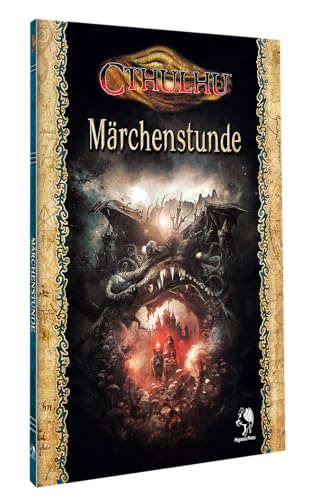

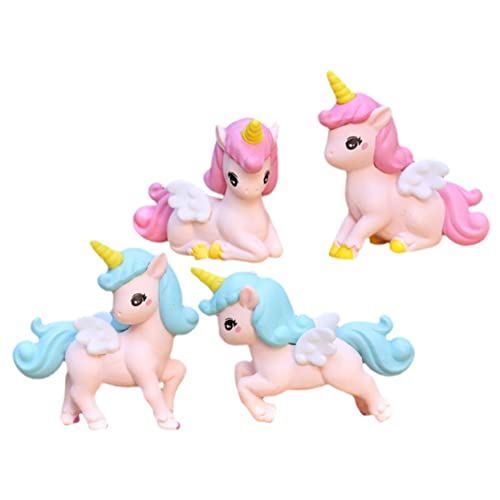
Cabilock 4pcs Miniatur Unicorns Ornamente Outdoor Decor Für Märchen Landschaft
von Cabilock
gefunden bei Amazon Marketplace
6,29 €
,-S.H.MonsterArts,-BAS63232,-Mehrfarbig-von-BANDAI-235915635.jpg)
Tamashi Nations - Godzilla S.P. - Jet Jaguar (2021), S.H.MonsterArts
von TAMASHII NATIONS
gefunden bei Amazon Marketplace
99,00 €

Aluminium 7075 Alloy Front Differential Housing for Traxxas 1:10 Ford GT 4-TEC 2.0/4-TEC 3.0 Corvette StinGrey/Factory Five 1933 Hot Rod Coupe/Toyota GR Supra GT4 - Black
von GPM Racing
gefunden bei Amazon Marketplace
42,60 €
-von-XGFFBAGB-313989915.jpg)
XGFFBAGB 1:24 Für 300SL Legierung Gießt Druck Metall Spielzeug Fahrzeuge Auto Modell Sammlung Geschenke(White,No Box)
von XGFFBAGB
gefunden bei Amazon Marketplace
76,24 €


Okeeyseda RC Lenkung Stange CNC Bearbeitung Aluminium Legierung LenkgestäNge Satz für 1608T RC Truck RC LenkgestäNge Satz, Rot
von Okeeyseda
gefunden bei Amazon Marketplace
3,48 €
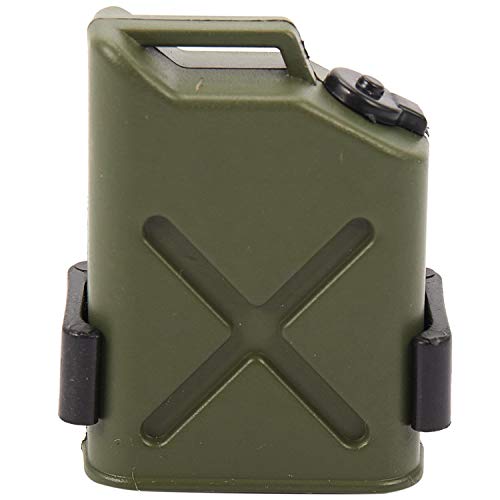
Cpolebev RC Rock Crawler 1:10 ZubehöR Mini Kraftstoff Tank für CC01 Axial SCX10 90046 D90 D110-4 Crawler Truck, GrüN
von Cpolebev
gefunden bei Amazon Marketplace
2,92 €

JBYJBX Grüner Militär-Camouflage-Umhang mit Kapuze, Halloween, 130/150/170 cm, Karneval, Hexenkostüm, Cosplay, Mottoparty
von JBYJBX
gefunden bei Amazon Marketplace
20,76 €

ifundom 24St Flugzeugmodell Flugzeug luftraketen für Outdoor Toys mitgebsel Kindergeburtstag beemysafe Fliegende Segelflugzeuge Fliegende Flugzeuge Schaum
von ifundom
gefunden bei Amazon Marketplace
10,19 €
-von-VUNIVERSUM-192795391.jpg)
VUNIVERSUM 3X Stück Premium 3Pin 1.25 SH 1.25mm Mini Micro JST Stecker inkl. 15cm 28AWG Elektronik Kabel + 3Pin Buchse Lose für Modellbau DIY
von VUNIVERSUM
gefunden bei Amazon Marketplace
3,99 €

Losueeun Off-Road Reifen Dicken Haut Set für 1/5 BAHA ROVAN KM Baja 5B Teile Spielzeug Teile
von Losueeun
gefunden bei Amazon Marketplace
26,40 €

DIYEAH 32St Herrscher Buchstabenschablonen malen Schablonen zum Malen Doodle-Board Magnetisches Zeichenbrett für Papier Schriftzug plastiktisch Alphabet-Vorlagen Schablone malen
von DIYEAH
gefunden bei Amazon Marketplace
12,69 €
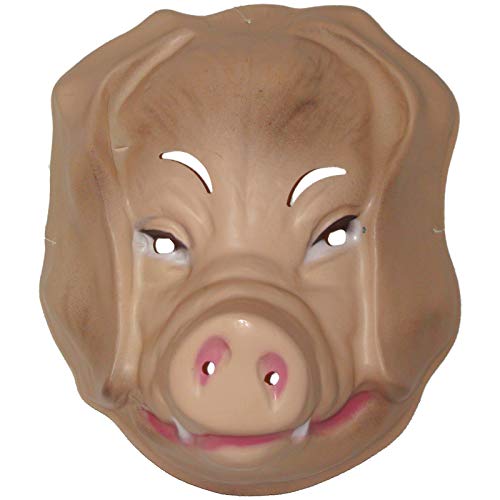
Tiermaske Schwein zum Aufsetzen Plastik Maske Schweinemaske Schweinsmaske Mask
von Spassprofi
gefunden bei Amazon Marketplace
18,49 €

EXPLORA - Covid Coronavirus - Anatomie des Virus - 544004 - Realistisches Modell aus 50 Teilen - Montageanleitung und Bildungsquiz - Entdeckungsset - Spiel für Kinder - Wissenschaftler - Ab 8 Jahren
von EXPLORA SCIENCES
gefunden bei Amazon
44,50 €

JAMARA 172130 - Folienbügeleisen Digi Control Iron
von JAMARA
gefunden bei Amazon Marketplace
58,49 €60,68 €
- 4%

Herpa Modellflugzeug Airbus A330-900neo - Delta Air Lines, Maßstab 1:200 - Snap-Fit, Modellbau Flugzeug, Flugzeugmodell für Sammler und Bastler, Miniatur Deko, Steckmodell mit Standfuß aus Kunststoff
von herpa
gefunden bei Amazon
19,95 €
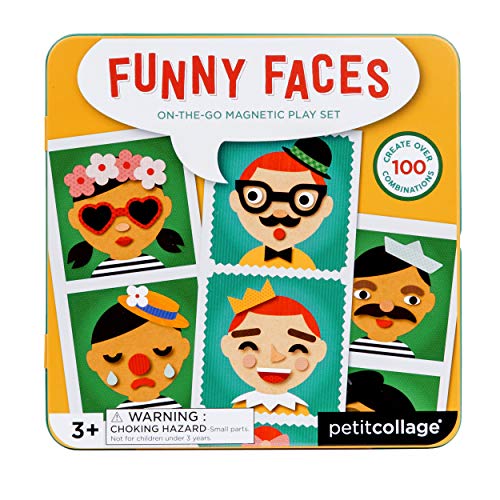
Petit Collage 8754460 Magnetspiel on The go, lustige Gesichter, Spielset für daheim und unterwegs, Orange
von Petit Collage
gefunden bei Amazon Marketplace
12,47 €
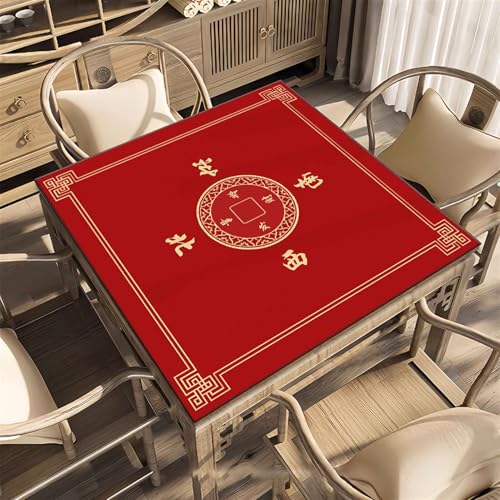
Icegrey Mahjong-Matte, rutschfeste Mahjong-Pad, Verschleißfeste Mahjong-Tischmatte aus Kristallsamt, geeignet für Mahjong-Poker, Stil 13
von Icegrey
gefunden bei Amazon Marketplace
28,68 €

Oseczmut Plüschtiere Panda, Panda aus Plüsch | Weiches Kissen, waschbar, realistische Plüschtiere für Panda, Plüschtiere für und
von Oseczmut
gefunden bei Amazon Marketplace
7,26 €
-von-Mattel-279488545.jpg)
MEGA Bloks First Builders Vehicles - Timmy (Dbl96)
von Mega Brands
gefunden bei Amazon Marketplace
12,16 €
-von-Pegasus-Spiele-288604247.jpg)
Pegasus Spiele 50 Clues – Kein Lebenszeichen (Sigrids Suche, Teil 1 von 3)
von Pegasus Spiele
gefunden bei Amazon Marketplace
11,03 €14,99 €
- 26%

Sunmeit 82 Teile/Satz Getriebepaket-Kit DIY-Zahnradsortiment-Zubehörset für Spielzeugmotorauto-Roboter Verschiedene Getriebeachsen-Riemenbuchsen
von Sunmeit
gefunden bei Amazon Marketplace
7,82 €

RC LED Dachleuchte, 4 LEDs Lichtleiste Dachleuchten Lampe Zubehörteil Kompatibel mit Axial scx10 Traxxas -4 RC Power Tool Accessories Industrial Tools
von Drfeify
gefunden bei Amazon Marketplace
18,79 €
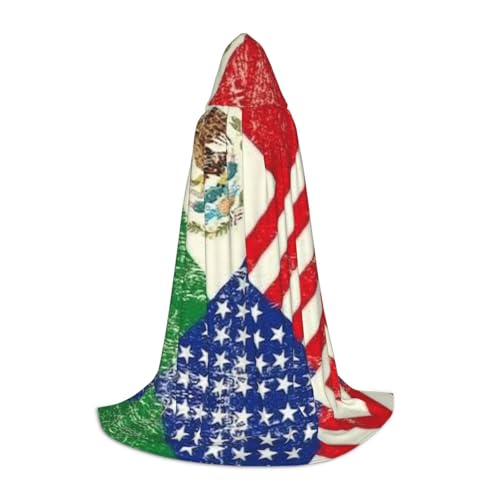
SAAKE Umhang mit mexikanischer amerikanischer Flagge, Cosplay, Halloween, Kapuzenumhang, Karneval, Party-Dekoration, 130/150/170 cm, Hexenkostüm
von SAAKE
gefunden bei Amazon Marketplace
16,77 €
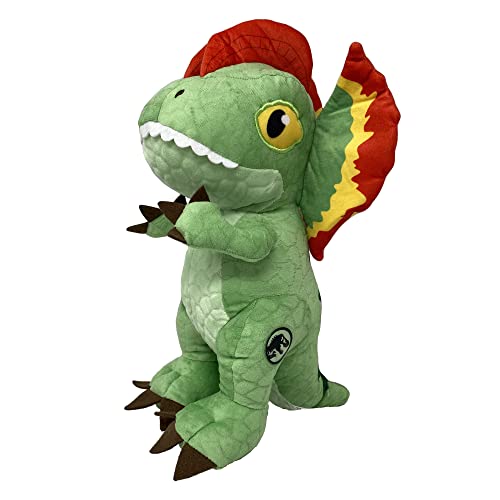
Jurassic World Plüschtier Dilofosaurus Dinosaurier 35 cm
von CARTOON
gefunden bei Amazon Marketplace
27,00 €
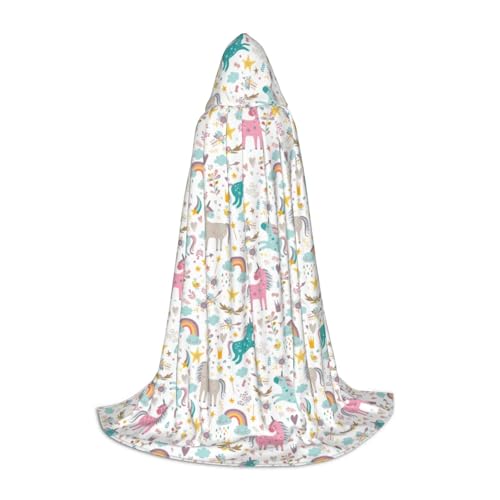
Einhörner, mehrfarbiger Druck, Halloween-Kostüm, Kapuzenumhang für Männer und Frauen, Party, Cosplay, Zauberer, Hexe, Wikinger
von Luckily&Day
gefunden bei Amazon Marketplace
18,53 €
-von-ZJchao-312456336.jpg)
ZJchao Aluminiumlegierungstischspiel Poker -Spiele Dices Set mit Speicherbox für Familienspaß (Quadrat)
von ZJchao
gefunden bei Amazon Marketplace
10,56 €
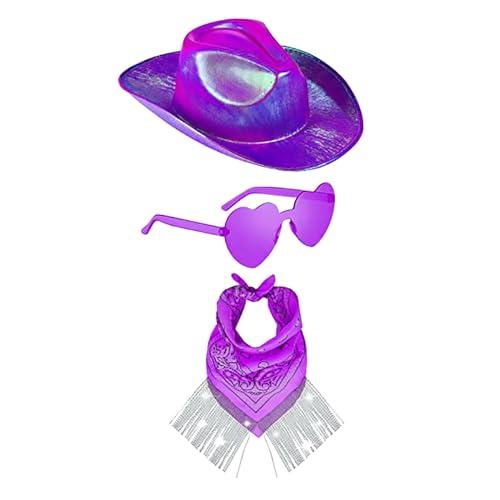
Generisch Cowboyhut für Damen, Cowboyhut, flauschige Federkrempe, Cowboyhut für Saumparty, Urlaub, Kostümparty, Spielverkleidung, Halloween, Cosplay Silvester PartyhüTe Karneval Accessoires Damen
von Generisch
gefunden bei Amazon Marketplace
11,50 €

XZEIT 2 Stück Lustige Gläser Augenbrauen, Schnurrbart Große Nase Kostüm Brillen Disguise Gläser Lustige, Halloween Große Nase Brille, Dekorative Brille Geburtstagsfeier Cosplay Requisiten(schwar
von XZEIT
gefunden bei Amazon Marketplace
7,25 €
-von-EtriiQURV-312532962.jpg)
EtriiQURV MJX Hyper Go 14209 14210 Ersatz-Aufhängungsarm, Stoßdämpfer, Reifen, Chassis, Karosserie, Antriebswelle, Ersatzteil, Originalteil(14280B)
von EtriiQURV
gefunden bei Amazon Marketplace
18,55 €
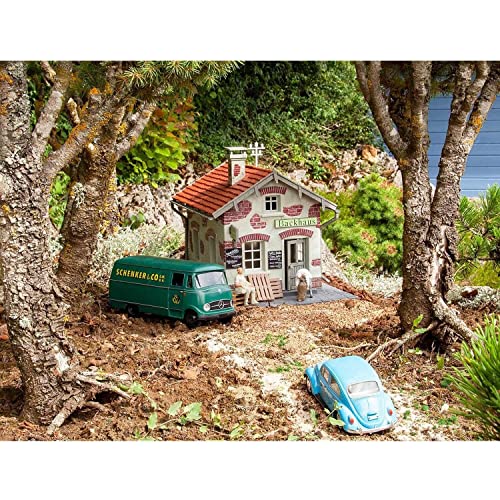
-von-PIPJLCGE-312319843.jpg)
PIPJLCGE Druckgussfahrzeuge Motorfahrzeuge 1:24 for McLaren 720s Miniatur Druckguss Statische Legierung Metall Fahrzeug Sammler Modell Auto Dekoration Fertiges Modellauto(Black)
von PIPJLCGE
gefunden bei Amazon Marketplace
78,52 €

Louttary Mark4 7 295 mm mit 5 mm Arm + Druck für Quadrocopter FPV-Modifikation Kohlefaser 7 Quadrocopter Freestyle-Rahmen
von Louttary
gefunden bei Amazon Marketplace
24,52 €

Hot Toys 1:6 Dark Trooper - The Mandalorian, Mehrfarbig
von Hot Toys
gefunden bei Amazon Marketplace
289,00 €

EHxCUF 1/10 RC Crawler Car Kompatibler Blauer Gummidichtungslagersatz 24-teilige Vorder- und Hinterachsteile
von EHxCUF
gefunden bei Amazon Marketplace
45,94 €
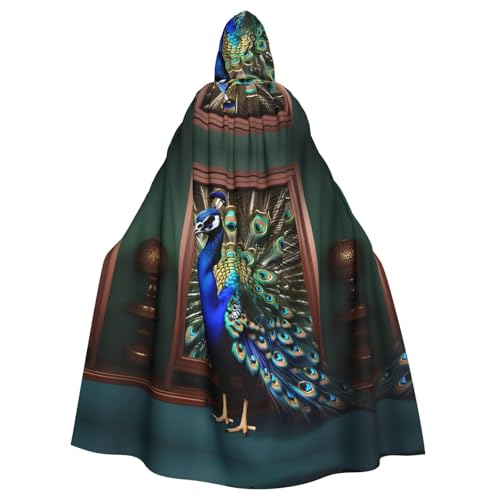
Wunderschöner Pfauen-Bilddruck mit Kapuze für Damen und Herren, für Karneval, Cosplay, Partys
von HTTUP
gefunden bei Amazon Marketplace
19,88 €
-von-GTFRUQAS-309214553.jpg)
GTFRUQAS RC Ersatzteile Für TRX4 Für SCX10 Für Capra Für Dodge Power Wagon 1/10 RC Crawler Für Chassis Upgrade Teile Metall Vorne Stoßstange Hinten Bull Bars(Black)
von GTFRUQAS
gefunden bei Amazon Marketplace
31,17 €

Langes Capybara-Kissen, Capybara-Kissen, süßes Cartoon-weiches Capybara-Streifenkissen | Platzieren Sie EIN Capybara-Kuschelkissen zum Kuscheln und Spielen
von Generic
gefunden bei Amazon Marketplace
8,79 €

TINEASUR 1 Set Schmetterlings Flügel Umhang Kostü Zubehör Party Dekoration Cosplay Für ädchen Schmetterlings Cape Für Karneval Und Feiertage
von TINEASUR
gefunden bei Amazon Marketplace
6,09 €


-von-DPLBAZHC-313143132.jpg)
Niedriggeräusches leichte 8pcs Propellers 6030f Schnellfreisetzungskompatible Drohnenflügelventilatoren Kompatibel mit 4 Pro -Zubehör(Black Silver 16pcs)
von DPLBAZHC
gefunden bei Amazon Marketplace
16,59 €
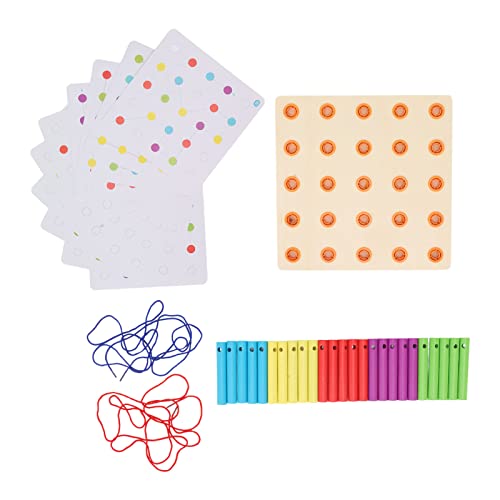
Hölzerne GeoBoard Bildungsmathematik Spielzeughand Spielzeug Augenkoordination Kinder Sensorisches Training
von Jerliflyer
gefunden bei Amazon Marketplace
21,59 €
Ujjdwiurgh A16S HD-Doppelobjektiv, 4000 W Pixel, Vorne und Hinten, Doppelkamera Ohne Speicherkarte, Li-Ionen-, Kinderkamera, Blau, Langlebig, Einfach zu Bedienen
von Ujjdwiurgh
gefunden bei Amazon Marketplace
21,27 €

RLDOBOFE Rosafarbener Kapuzenumhang mit Teekannen-Aufdruck, Hexenumhang, langer Samt-Umhang, Unisex, Weihnachten, Halloween, Kapuzenumhang, Schwarz, Einheitsgröße
von RLDOBOFE
gefunden bei Amazon Marketplace
22,06 €

eudaikonrich for MN128 25g Metall-Servomotor for MN86 Teil 4,5KG Digitaler Metallgetriebe-Servo mit hohem Drehmoment
von eudaikonrich
gefunden bei Amazon Marketplace
30,89 €
-46,100-von-Matchbox-299226903.jpg)
Matchbox 1949 Kurtis Sportwagen (Marineblau) 46/100
von Matchbox
gefunden bei Amazon Marketplace
11,48 €

ERINGOGO 10St Karotte-Anhänger zu Ostern basteln für Ostern Osterdekoration mit Karotten Osterfest hängendes Türen Plüsch Karottendekore zu Ostern Osterkarotte Stoff Orange
von ERINGOGO
gefunden bei Amazon Marketplace
11,49 €

Tyrannosaurus Rex Auto-Ornament, T-Rex Auto-Armaturenbrett-Figur - Treibender Dinosaurier auf Motorrad Figur - Kreatives Armaturenbrett-Dinosaurier-Ornament, neuartiges Auto-Dinosaurier-Ornament für d
von Generisch
gefunden bei Amazon Marketplace
8,29 €

HJLUUFT Umhang mit Kapuze, Motiv: violette Rosen, Totenkopf, Renaissance, Halloween, Mittelalter-Kostüm, Cosplay, langer Umhang für Damen und Herren
von HJLUUFT
gefunden bei Amazon Marketplace
15,50 €

Damen-Haarreif mit Hasenohren, Fliege, Schwanz, Lolita-Stil, Karneval, Party, Kostüm, Halloween, Party, Cosplay, Zubehör
von XAGMODSHN
gefunden bei Amazon Marketplace
7,60 €
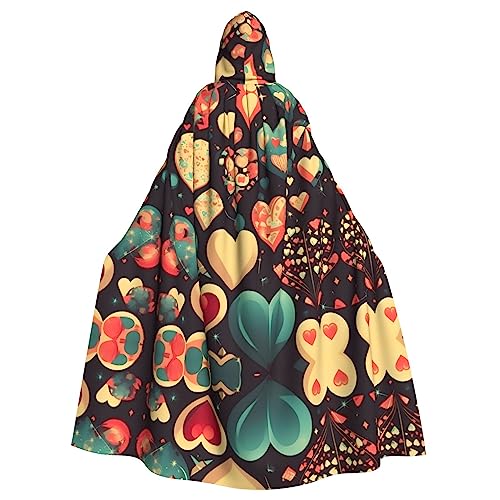
KVCBUYK Kapuzenumhang mit Herzmotiv, für Halloween und Erwachsene, mit Fliege und super großer Kapuze
von KVCBUYK
gefunden bei Amazon Marketplace
19,77 €

TOBBOMEY Handschuhe mit einzigartigem Design Halloween-Simulation für Erwachsene weiche Froschpfoten-Handschuhe für Cosplay und Bühnenauftritte
von TOBBOMEY
gefunden bei Amazon Marketplace
8,39 €

TOP BRIGHT rxzer23,123 Spielzeug Baby Pädagogisches Holzperlenlabyrinth Form Sortierer Für 1 Jahr alte Jungen und Mädchen Kleinkinder Geschenk Größe, 5-in-1, Kleiner Aktivitätswürfel, S
von TOP BRIGHT
gefunden bei Amazon Marketplace
17,99 €

Marabu KiDS Little Artist, Künstler Pinselset Junior für Kinder ab 5 Jahren, 4 Malpinsel aus FSC-zertifiziertem Holz, Kinderpinsel mit Naturborsten, flach, 318000000005
von Marabu
gefunden bei Amazon
3,60 €4,49 €
- 20%

Tynmoel 40Pcs Hochleistungs 1/10 Rallye Felgenräder und Reifen 20101 für Rc Car
von Tynmoel
gefunden bei Amazon Marketplace
52,76 €

JAWSEU Damen 1920s Flapper Feder Stirnband, Kristall Kopfschmuck für Frauen, Karneval Fasching Kostüm
von JAWSEU
gefunden bei Amazon Marketplace
9,85 €

Wayfadacc Punk-Blumen-Haarband, künstlerischer Haarreif, Rock-Kopfbedeckung für Cosplay, Uni, Rock-Spiked-Kopfbedeckung, Zubehör
von Wayfadacc
gefunden bei Amazon Marketplace
9,99 €
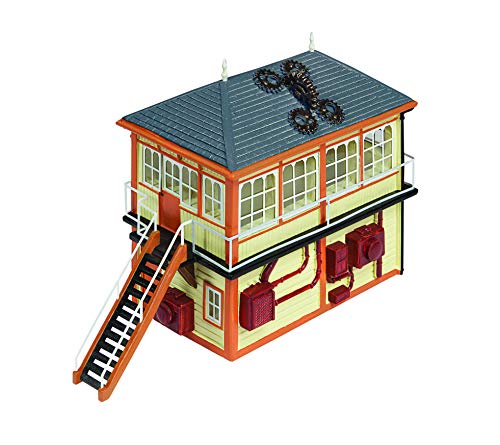

30 PCS Kaffee Ballons, 6 verschiedene Arten von Kaffee themed Ballons für Kaffee Party Supplies Kaffee Party Bevorzugungen Kaffee Geburtstag Party Dekorationen
von LFCFDX
gefunden bei Amazon Marketplace
7,48 €

WILDPARTY 80er 90er Jahre Outfit Damen, Netzoberteil Tank top, Netzshirt Mesh Oberteil, Kostüm 80er Jahre Neon Shirt 80s Aerobic Outfit Off Shoulder Mottoparty Karneval Fasching Kleidung
von WILDPARTY
gefunden bei Amazon Marketplace
25,99 €

JOINPAYA 1 Satz Schutznetzspielzeug Schutznetz DIY Bauklötze Sicherheitsspielzeug Bausatz Stabiler Zaun Verteidigungsspielzeug Mini Zaun Szenenzubehör Spielzeugzaun Abs
von JOINPAYA
gefunden bei Amazon Marketplace
8,89 €

Generisch Handkessel,Bunt denkender Handkessel | Neuartiger Energieübertragungs-Handkessel aus Glas | Farbmesser-Flüssigkeits-Handkessel, interessante Wohndekoration für Kinder, Familien, Freunde
von Generisch
gefunden bei Amazon Marketplace
9,19 €

Karnevalskostüm, Dekoration, Maske, Kostüm, Outfit, Spitze, Floral, venezianische gefälschte Blume, Ball, Partyzubehör, Karnevalskostüme, 2025, Stirnbänder, Masken, Karnevalskostüme, Maske, Spitze,
von Generisch
gefunden bei Amazon Marketplace
18,35 €

Dampfsimulative Flugzeugturbine, Modell, Wissenschaft, Experiment, Motor, Alkohol, Brennholz, Abfall, Turbine, Motor, Lehren, Männer, Geschenke
von MOBUKJUU
gefunden bei Amazon Marketplace
126,62 €
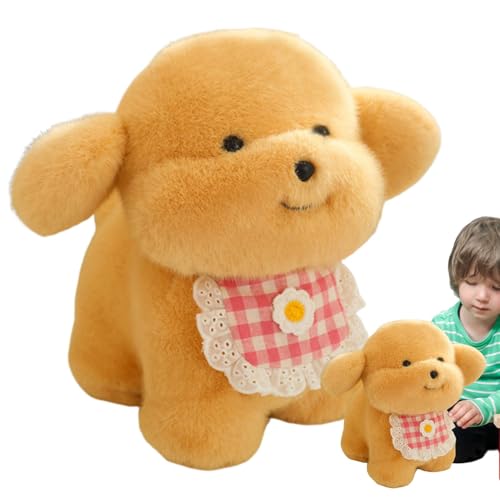
Plüschtiere aus Baumwolle, Plüschpuppen für Hunde | Niedliches Plüschtier – Plüschkissen, Spielzeug für Familie, Freunde, Kollegen, Geburtstag, Ostern
von Generic
gefunden bei Amazon Marketplace
23,09 €

ULTECHNOVO 4 Stück Handmodell-Requisiten Frauen Männchen Skelett Inhaber Armband-Organizer Armbänder schmuck display schmuckdisplay Handringhalter Displayhalter für Handmodelle Plastik Weiß
von ULTECHNOVO
gefunden bei Amazon Marketplace
28,69 €
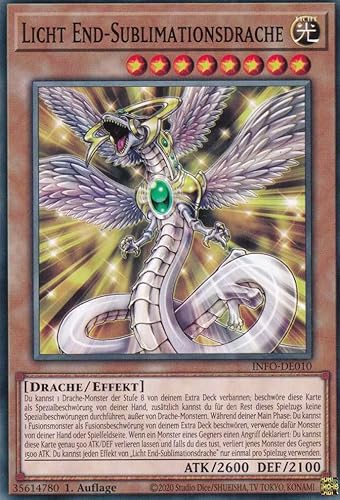
Licht End-Sublimationsdrache Common INFO-DE010 - The Infinite Forbidden Karte - mit GamersHeaven Cardboard Guard
von GAMERSHEAVEN
gefunden bei Amazon Marketplace
1,95 €

Generisch Kostüm 80er Jahre Netzoberteil Damen Tops Neon Shirt 80s Aerobic Outfit Kleidung Mottoparty Accessoires Green The Outfit Karneval Accessoires Geschenk
von Generisch
gefunden bei Amazon Marketplace
70,00 €

little tikes My First Cars Crazy Fast Cars Serie 2 - Postauto - Aufziehauto mit bis zu 15 m Reichweite - Realistisches Design, Leicht zu Greifen – Fördert die Fantasie - Ab 2 Jahren
von little tikes
gefunden bei Amazon
3,87 €

Masken für Fasching, gefälschte Blumendekorationen, Federn, venezianische Kugel, Mascarade, Maske, Karnevals-Outfit, Kopfbedeckung, Party, 2025, Karneval, Dekor, Zubehör, Stirnbänder,
von Generisch
gefunden bei Amazon Marketplace
22,59 €

Dress Up America Clown Shoes Überschuhe für Kinder und Erwachsene
von Dress Up America
gefunden bei Amazon
21,65 €
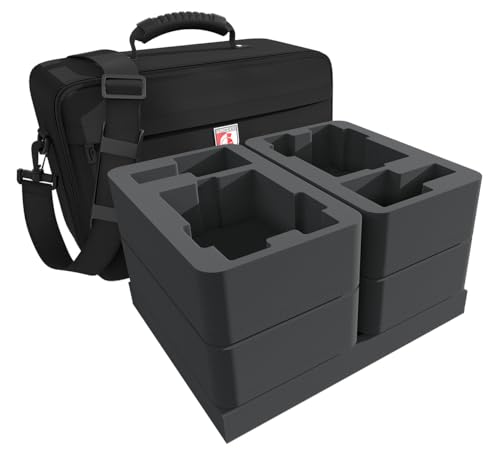
Feldherr Maxi Tasche kompatibel mit Astra Militarum
von Feldherr
gefunden bei Amazon Marketplace
98,99 €

MAGICLULU 4 Stücke Riesen Jungen und Mädchen Zahnbürste Luftballons Übergroßen Gesundheit Decor Set für Party
von MAGICLULU
gefunden bei Amazon Marketplace
8,09 €

MZRAN Halloween-Brille mit Dollarzeichen, lustige Brille in Form eines Dollarzeichens, Partybrille für Erwachsene, Geburtstag, Halloween, Fotografie
von MZRAN
gefunden bei Amazon Marketplace
7,06 €

Wayfadacc Blaues Netz-Stirnband mit Schleife, für Kinder, Buch-Thema, Schule, Event, Halloween, Cosplay und Verkleidungsparty, Kopfzubehör
von Wayfadacc
gefunden bei Amazon Marketplace
7,99 €
-von-YRXIAO-307682786.jpg)
YRXIAO Modellbausatz Auto 1:43 Renault R KOLEOS Limited Edition Modellautos Sammlerstücke Ornamente Modellautos Automodell Aus Legierungsdruckguss Für Wohndekorationen(Style 1)
von YRXIAO
gefunden bei Amazon Marketplace
64,16 €

Foam Water Toys - Wasseranlagen, Pool Wasserquieter, Sommeraktivitätskampffiel -Spiel - MPUR Accessoires Strandparty Aus Um Unfälle Zu Verhindern. D Weichem Eva -Schaum Mit Erwachsenen Kindern Garten
von Generisch
gefunden bei Amazon Marketplace
1,88 €
-von-ROJDFCNBW-314776784.jpg)
ROJDFCNBW Stick Baumwolle und Tischtuch, for Tischdecken, abwischbare Tischdecken aus Kunstleinen(Red,60x60cm)
von ROJDFCNBW
gefunden bei Amazon Marketplace
45,14 €

Baker Ross AX619 Monster-Gummibälle in Eiform, 10 Stück, Gastgeschenke für Kindergeburtstage und Outdoor-Spielzeug
von Baker Ross
gefunden bei Amazon
11,29 €11,94 €
- 5%
-von-AOFCESQY-308418001.jpg)
AOFCESQY Mavic Air 3 Motorarm vorne Links Motorarm hinten rechts Motorarm Mittelrahmen Oberschale ESC-Board for D-JI Mavic Air 3(Upper Shell)
von AOFCESQY
gefunden bei Amazon Marketplace
68,40 €
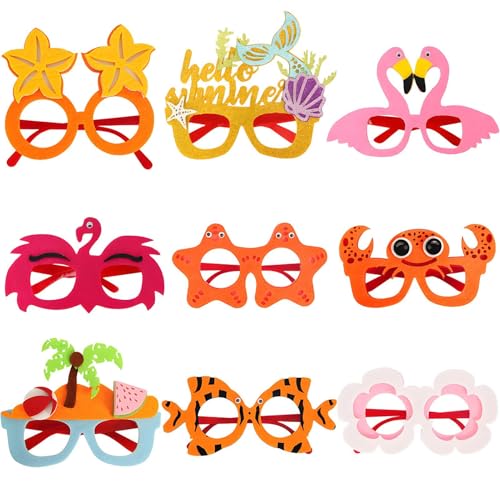
Sonnenbrille für Party, Hawaiian Party Sonnenbrille - 9x Beach Party Pool Dekoration Sonnenbrille - Lustige thematische kühle Neuheit Streichbrille für hawaiianische Strandkreuzfahrt, Camping -Abschlu
von Generisch
gefunden bei Amazon Marketplace
11,76 €
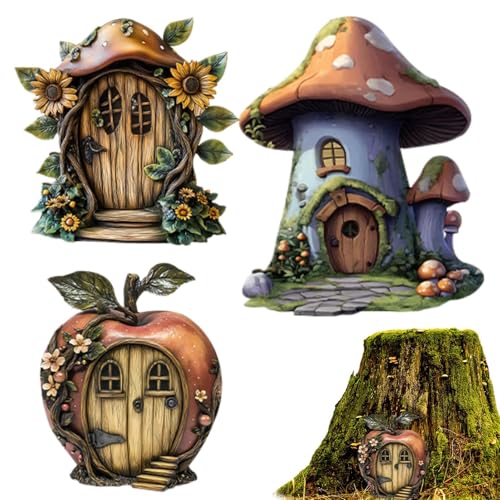
Feengartentür | 2D-Holz-Feentür Miniatur | 3 Stück niedliches Märchen rustikales Miniaturzubehör für Kinder Wand Garten Dekoration Baumhaus Regal
von Hugsweet
gefunden bei Amazon Marketplace
6,13 €

HOBBY BOSS 80147 1:35 Flakpanzer IA mit Munitions-Anhänger
von HOBBY BOSS
gefunden bei idee+spiel
25,78 €

Eulenspiegel 001103 - Shining Glue Remover, 50ml
von Eulenspiegel
gefunden bei Amazon Marketplace
4,36 €
-von-CMC-imports-244753563.jpg)
CMC imports 200 Klemmbausteine Briks Bausteine 1x2 Noppen Kompatibel freie Auswahl 35 Farben (920 Clear Klar/Transparent)
von CMC imports
gefunden bei Amazon Marketplace
17,99 €
-von-TONYFY-289166413.jpg)
TONYFY Hundespielzeug, Hund Quietschspielzeug mit Knitterpapier, Plüschtier Hund Plüsch Kauspielzeug, Baumwollseil interaktives Spielzeug für Welpen, kleine, mittlere Hunde (Grauer Hase)
von TONYFY
gefunden bei Amazon Marketplace
10,99 €13,99 €
- 21%

YCNXEB Miniatur Modelle 1:43 Für Audi Tt Coupe Legierung Druckguss Auto Modell Klassische Sammlung Souvenir Hobby Display Originalgetreue Nachbildung
von YCNXEB
gefunden bei Amazon Marketplace
235,87 €

BREAUX Blauer gestreifter Sternen-Totenkopf-Druck, Halloween-Umhang, Halloween-Kapuzenumhang, Erwachsenen-Party-Dekoration, Umhang
von BREAUX
gefunden bei Amazon Marketplace
19,76 €
-240875849.jpg)
Shinybox Wasser Flipper, 8 Stück Wasser Handheld Spiel Arcade Mini Wasser Ring Spiel Kinder Wasserflipper Fun Geschenke Mitgebsel Kindergeburtstag für Verschiedene Altersgruppen
von Shinybox
gefunden bei Amazon Marketplace
14,99 €

Cabilock 2Pcs Chef Stirnband Japanisch Sushi Chef Bandana Kostüm Kopfbedeckung Für Sportkochküche Supply Party Dekorationen
von Cabilock
gefunden bei Amazon Marketplace
6,99 €

TOYANDONA Stelzen Für Jungen Und Mädchen 4-teiliges Lauf- Und Balance-Spielzeug Für Kleinkinder Pädagogisches Stepper-Spielzeug Zur Entwicklung Von Kraft Und Gleichgewicht
von TOYANDONA
gefunden bei Amazon Marketplace
8,79 €

Generisch 80er 90er Jahre Outfit Damen, Netzshirt, Tank Top, Beinwärmer, Netzhandschuhe Pinkes Tshirt Damen Body Glitzer Damen Rosa
von Generisch
gefunden bei Amazon Marketplace
32,00 €

MagBuild Magnetische Bausteine für Kinder, 60 Teile, Konstruktionsspielzeug mit Verbindungsstäben
von Generisch
gefunden bei Amazon Marketplace
49,95 €

Eorleya RC-Reifen Reifen-Upgrade-Teile Schlammreifen RC-Autoteile Zubehör Schwarz & Silber
von Eorleya
gefunden bei Amazon Marketplace
51,46 €




-braun-Nachhaltige-warme-Kuscheltier-Hausschuhe-fuer-Jungen-und-Maedchen-Tier-Schuhe-mit-Anti-Rutsch-Sohle-Slippers-von-NICI-263898467.gif)